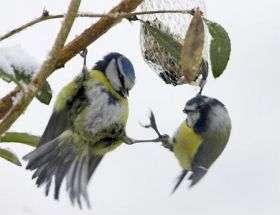Wanted: a reason to divorce

Divorce is widespread, not only in humans, but also in socially monogamous birds like the blue tit. Behavioural ecologists Mihai Valcu and Bart Kempenaers from the Max Planck Institute for Ornithology in Seewiesen found divorce rates of up to 50% in a long-term study of this species. But why do partners split up? To answer this question, it helps to know who suffers and who benefits from the separation (Animal Behaviour, April 23, 2008).
Previous studies on small passerine birds, such as blue tits, have shown that females do better after divorce. This is because they had more offspring with a new partner.
"These findings have led to the suggestion that the females should take the initiative to leave their partner", says Bart Kempenaers, Director of the Department Behavioural Ecology and Evolutionary Genetics at the Max Planck Institute for Ornithology in Seewiesen.
In their study however, Kempenaers and his colleague Mihai Valcu obtained evidence that the increased reproductive success of divorced females may not be caused by getting a better partner, but by leaving the previous home and moving to a better place. Such breeding dispersal is common in females, in contrast to males, who rarely leave their territory after a divorce.
To separate the effects of territory change and partner change, the Max Planck researchers investigated what happens to the divorced females that stay in or close to their former breeding area. They found that in this case males, but not females, increased their fitness: they mated with larger females and had a higher breeding success compared to their former partner.
So is it the males that make the first step towards separation? "We can only speculate", says Kempenaers. "But our hypothesis is that a larger, stronger female expels the original mate, and takes over the territory and the male." In this case, the separation may not be a decision by one of the partners to leave, but may be caused by competition among females - this would then be the classic reasons for divorce.
Citation: Mihai Valcu and Bart Kempenaers, Causes and consequences of breeding dispersal and divorce in a blue tit (Cyanistes caeruleus) population. Animal Behaviour, April 23, 2008
Source: Max Planck Institute for Ornithology















